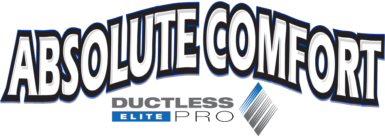It’s a frigid January morning in Central Indiana. Your neighbor’s heat pump is chugging loudly outside, struggling against the cold. But in your home? Complete silence. Everyone is absolutely comfortable in their beds. Except you – your coffee brews peacefully, birds begin to chirp outside, and you smile knowing that your heating bills are half what they used to be.
This is life with geothermal—and it’s more different than you might expect.
At Absolute Comfort, we’ve helped many Central Indiana homeowners make the switch from traditional HVAC to geothermal systems. The questions we hear most often aren’t about installation costs or technical specs—they’re about daily life. What will it actually feel like? Will my routine change? Is it really that much better?
When comparing geothermal vs traditional HVAC, the differences go far beyond energy bills. Here’s the honest truth about how geothermal transforms your everyday experience, from the moment you wake up to when you drift off to sleep.
The Quiet Revolution in Your Home
The biggest shock? The silence.
Traditional HVAC systems announce themselves. Gas furnaces roar to life with a whoosh of flames and the slight smell of something burning. Air conditioners rumble and rattle outside your bedroom window. Heat pumps work overtime in winter, their outdoor units groaning against Indiana’s brutal cold snaps.
Geothermal systems operate in near-silence. No outdoor unit means no mechanical noise disrupting your backyard barbecues or rattling your windows during startup. The indoor unit runs so quietly that many homeowners initially worry something’s wrong—until they feel the perfectly conditioned air flowing through their vents.
This isn’t just about noise pollution. It’s about reclaiming your peace of mind. According to the EPA, geothermal systems produce significantly less noise than conventional systems, contributing to better sleep quality and reduced stress.
Comfort That Actually Makes Sense
Here’s where geothermal gets interesting: it doesn’t just heat and cool your home—it conditions it.
Traditional systems blast hot or cold air in cycles. Your gas furnace might push 140°F air through your ducts, creating hot spots near vents and cold zones elsewhere. Your AC runs intermittently, leaving you with temperature swings throughout the day.
In the geothermal vs traditional HVAC comparison, geothermal delivers steady, consistent temperatures by tapping into the earth’s stable 55°F underground temperature year-round. The U.S. Department of Energy confirms that this consistency eliminates the hot and cold spots common with traditional systems.
What this means for your daily comfort:
- No more adjusting the thermostat multiple times per day
- Even temperatures from room to room
- Better humidity control (crucial during Indiana’s muggy summers)
- Optional radiant floor heating for bathrooms—imagine warm floors on winter mornings
The Bills That Make You Do a Double-Take
Remember your last summer cooling bill? That three-digit number that made you reconsider hosting family gatherings?
Geothermal typically cuts heating and cooling costs by 50-70%. For a typical 2,000-square-foot home in Greenwood, that could mean saving $1,200-$2,000 annually. Over the system’s 25+ year lifespan, you’re looking at $30,000-$50,000 in energy savings.
But here’s the bonus: many geothermal systems can include a desuperheater, which provides nearly free hot water during cooling season. Your water heating costs could drop by 30-50% during summer months. At your assessment, ask your technician if this is an option for your property.
Ready to schedule that free assessment now? Call (765) 534-4328 or drop us a message here: ➡️ https://absolutecomfort.org/contact/
Maintenance That Actually Makes Sense
Traditional HVAC maintenance is a seasonal ritual. Twice yearly, you’re changing filters, clearing debris from outdoor units, and scheduling tune-ups. Winter means brushing snow and ice off heat pumps. Summer means hosing down condenser coils clogged with cottonwood seeds and grass clippings.
Geothermal maintenance is refreshingly simple:
- Filters: Standard MERV 11 pleated filters, available at any hardware store or online retailers. Change every 3 months, just like any forced-air system.
- Annual check-ups: One professional visit per year (though twice yearly is optimal). No outdoor unit means no weather-related maintenance.
- Lifespan: Indoor components last 25+ years; underground loops last 50+ years with warranties to match.
Our HVAC maintenance plans keep everything running smoothly with priority scheduling and discounted repairs.
The Air You Breathe
Indoor air quality improves dramatically with geothermal. Unlike gas furnaces, which introduce combustion byproducts and potential carbon monoxide risks, geothermal systems are all-electric and produce no indoor emissions.
Combined with high-quality filtration, you’ll notice:
- Less dust accumulation
- Reduced allergens (great news for families with asthma or allergies)
- No combustion odors
- Better humidity control prevents mold and mildew growth
The American Lung Association emphasizes that eliminating combustion appliances significantly improves indoor air safety.
Your Questions Answered
“Will my thermostat work with geothermal?” Yes! Most standard thermostats are compatible, including smart models like Nest and Ecobee. Your existing thermostat often transfers over seamlessly.
“How quickly does the temperature change?” Geothermal adjusts temperatures in 15-30 minutes, similar to traditional systems. The gentler output (95-100°F versus 140°F+ from furnaces) feels more comfortable and reduces system cycling.
“Is there still airflow through my ducts?” Absolutely. Geothermal uses your existing ductwork for forced-air distribution. If your ducts need optimization, we handle that during installation.
The Deadline You Can’t Ignore
Here’s the urgent reality: the federal 30% Residential Clean Energy Credit expires December 31, 2025. This credit can save you $6,000-$12,000 on a typical geothermal installation—but only if you act before the deadline.
The Database of State Incentives for Renewables & Efficiency (DSIRE) tracks these incentives, and Indiana homeowners have never had better financial support for geothermal adoption.
Ready to Experience the Difference?
Geothermal isn’t just about energy efficiency—it’s about transforming how you experience your home. Quieter mornings. Consistent comfort. Lower bills. Cleaner air. Simpler maintenance.
Take the next step:
- Get a free consultation: Call (765) 534-4328 to speak with our friendly office staff.
- Explore financing: Apply for green energy loans to make your upgrade affordable
- Learn more: Read our complete guide to geothermal installation in Indiana
Don’t let 2025 slip away without claiming your 30% tax credit. It expires December 31, 2025! Contact Absolute Comfort today—your trusted partner for geothermal systems throughout Central Indiana.
Related Reading:
- Geothermal Tax Credits: What’s Changing in 2025
- Is Geothermal Installation Difficult? A Homeowner’s Guide to Making the Switch
- Your Step-by-Step Guide to Installing a Geothermal System in Indiana Before the 2025 Tax Credit Deadline
Consult a tax professional regarding specific incentive eligibility. Absolute Comfort serves Greenwood, Franklin, Fishers, Carmel, and surrounding Central Indiana communities.

